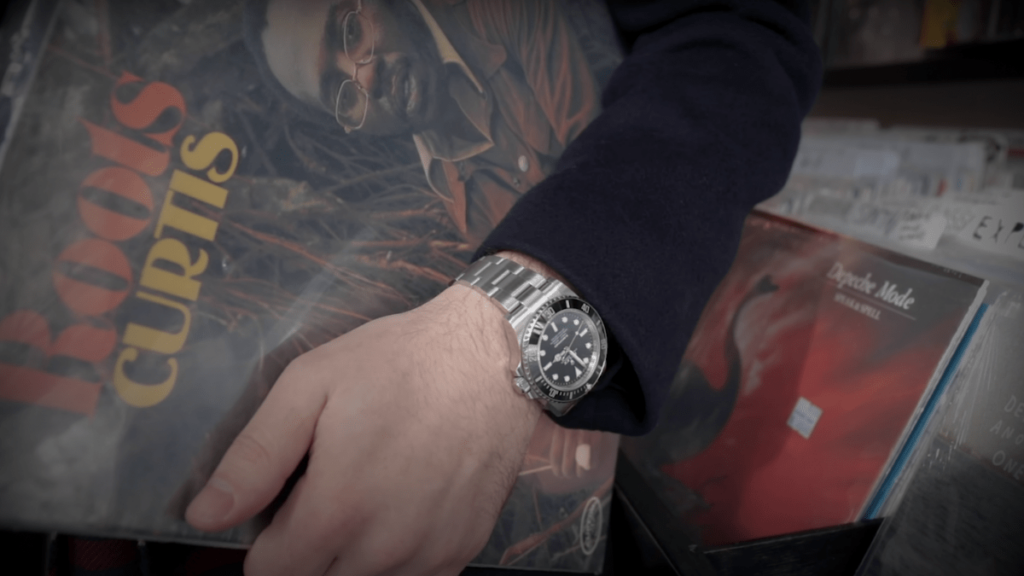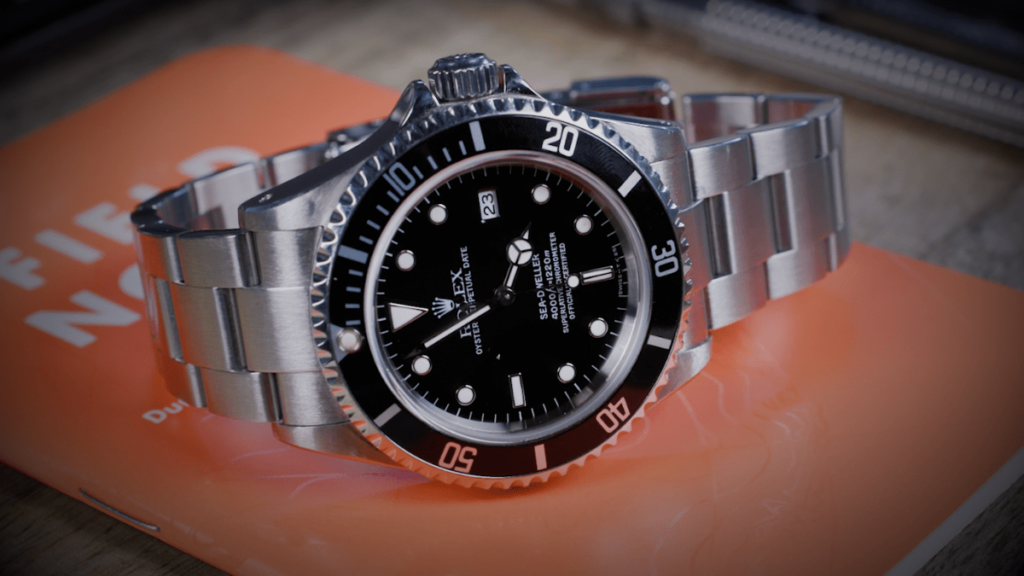Rolex is, without a doubt, one of the finest luxury-watch manufacturers in the world. A great deal of their appeal comes from their ability to produce watches that are both stylish and durable; Rolex watches look just as good on your wrist at a dinner party, for instance, as it does 200 meters under the sea.
Alongside the iconic Rolex Sky-Dweller, two watches from the company that are frequently compared are the Rolex Submariner vs Sea-Dweller.
Because they are very aesthetically similar and share a lot of the same specifications, they are often treated as if they’re basically the same watch.
This is not true, however, and there’s more than enough under the hood to justify a deeper comparison between these two great Rolex watches.
Let’s take a more in-depth look at the Rolex Submariner vs Sea-Dweller: their similarities, their differences, and which one might be more suitable for you.
Rolex Submariner
The Rolex Submariner traces its lineage all the way back to 1953. Though it wasn’t the first modern dive watch, it was close, and it was the first to be usable down to the coveted 100-meter mark.
The Rolex Submariner was manufactured with the then-nascent activity of scuba diving in mind. At that time, Jacques Cousteau had exploded in the popular imagination with his invention of the Aqua-Lung and his subsequent pioneering deep-sea exploration. As recreational diving surged in popularity in the post-war period, so too did demand for diving watches.
The Rolex Submariner was built with input from Cousteau itself and solved the problem of water intrusion with an innovative pair of O-ring gaskets that created two separate internal spaces and prevented water or pressure from damaging the watch.
The Rolex Submariner watch underwent several innovations over the years, including an enlarged bezel to facilitate manipulation with diving gloves on. It became hugely popular after Sean Connery, as James Bond, wore it in the movie Dr. No.
70 years after its inception, it’s still going strong. Now resistant to 300 meters and constantly undergoing improvements and reassessments, it’s perhaps the world’s most iconic luxury diving watch.
Rolex Sea-Dweller
The Rolex Sea-Dweller came about due to the need for a very specific kind of watch suited to a very specific kind of diver.
Cousteau’s invention of the Aqua-Lung made widespread sea exploration more possible than ever before, and by the 1960s, corporations had begun to take advantage of the new technology to discover underwater oil reserves. This led to the invention of a new profession – the professional diver.
Some divers, called saturation divers, actually lived underwater for weeks at a time in pressurized habitats. Because nitrogen can cause narcosis in human beings at great depths, they instead breathed a helium-oxygen mix.
Upon returning to the surface, the helium molecules that had accumulated in the divers’ watches would expand. This often caused the crystal on the face of the watch to be forced off, ruining the watch.
The Rolex Sea-Dweller was an answer to this problem. Rolex created an ingenious piece of tech called the Helium Escape Valve, which essentially allowed the watch to decompress (by evacuating helium) in the same manner as its wearer.
The Rolex Sea-Dweller is not as famous as the Submariner, obviously, and despite its superficial similarities to the more prestigious watch, has a few features that differ.
For instance, the Rolex Sea-Dweller has a thicker case, and the crystal is also thicker and stronger. These features contributed to making the watch able to withstand much greater pressure than the Submariner; the first version of the Rolex Sea-Dweller could keep functioning up to 600 meters.
With that in mind, then, what are the differences between these two iconic watches?
Form Over Function (And Vice Versa)

By the 1960s, the Rolex Submariner had become a status symbol far more than a working watch used by professionals, and this was reflected in the direction Rolex took the watch.
The Rolex Submariner acquired a date display and a controversial magnification lens that, while it looked nice, threatened to unbalance the dial.
It was also made available in solid gold, which put paid to any notion of the watch being a professional diver’s watch.
The Rolex Sea Dweller, meanwhile, stuck to what it was made for – deep-sea diving. It was big, chunky, tough, and available only in steel.
Horological advances doubled its functional depth, meaning it could go to an astonishing 1200 meters below sea level, especially thanks to its helium escape valve.
The basic difference between the two, then, is that one (the Submariner) is made to look good on your wrist. The other (the Rolex Sea-Dweller) is made to work well at depth.
The Submariner Has Much More Variety
Being the older watch – and the one that’s seen much more as a status symbol – the Rolex Submariner is available in many more varieties than its younger sibling.
From the type of metal (gold, stainless steel, white gold, and Rolesor varieties are all available) to date and no-date versions and various bezel options, there are plenty of different kinds of Submariner to choose from.
The workhorse Sea Dweller, however, was available only in stainless steel for much of its life. In 2019 it became available in Rolesor – a gold and stainless steel mixture – and so there are now two versions of the deep-sea watch. On both versions, only a black bezel is available.
The Sea-Dweller Is Technically More Accomplished (But That Likely Doesn’t Matter)

The Rolex Sea-Dweller was – and remains – a deep-sea watch designed for saturation divers. This means it has a few features the Submariner lacks – namely, minute markings all the way around the bezel (as opposed to 15 minutes for the Submariner), the HEV, and a vastly improved functional depth. It also has a Fliplock extension, which allows it to fit snugly over a wet or dry suit.
None of this actually matters unless you’re a saturation diver, of course, and you wouldn’t even notice unless they were pointed out to you.
The fact is that these features are there for saturation divers, where such technical features could mean the difference between life and death.
For you, the modern watch wearer (who is presumably not a professional saturation diver), they don’t make any difference at all.
The Rolex Submariner vs Sea-Dweller: Which One of These Dive Watches Should You Buy?
So, who wins between the Rolex Submariner Vs Sea-Dweller? As it’s designed with aesthetics in mind, the Rolex Submariner is generally the better watch for most people.
Even if you’re an avid diver, the Submariner is still the better watch, as the additional features of the Rolex Sea-Dweller quite simply are not necessary for recreational divers. A Rolex Submariner is also cheaper; it currently costs around $9150.
That said, the Rolex Sea-Dweller is still a fine piece of horological engineering, and you could do worse than to have one on your wrist. It will, however, cost a little more than the Submariner, with prices starting at $11,700.
Whatever you ultimately plump for, however, you can rest assured that you’ll be wearing one of the finest dive watches ever made – even if you’re not doing any diving.

